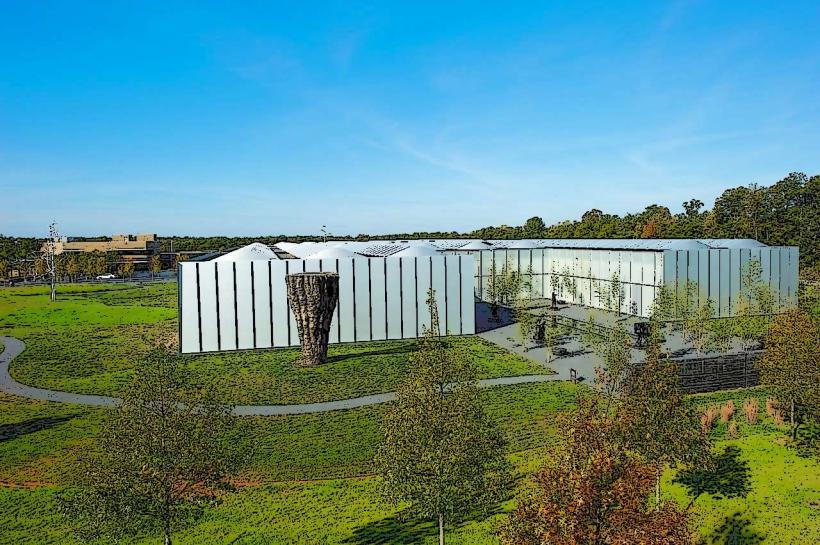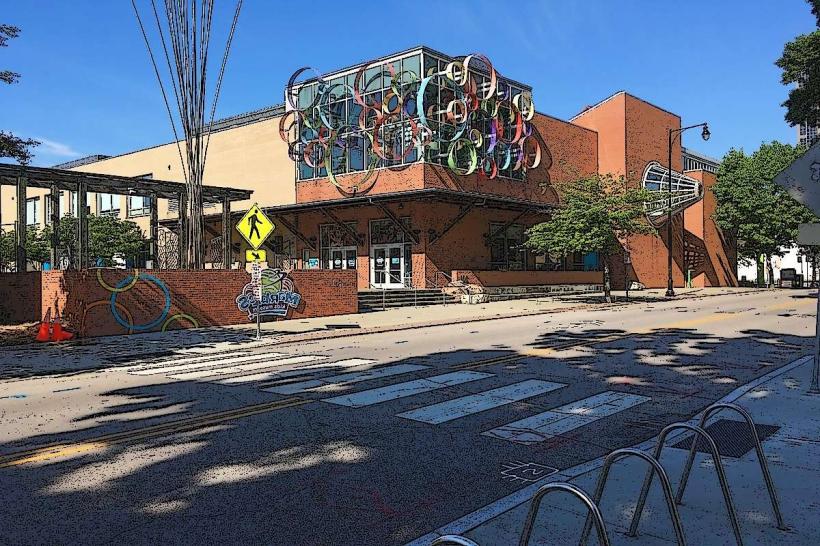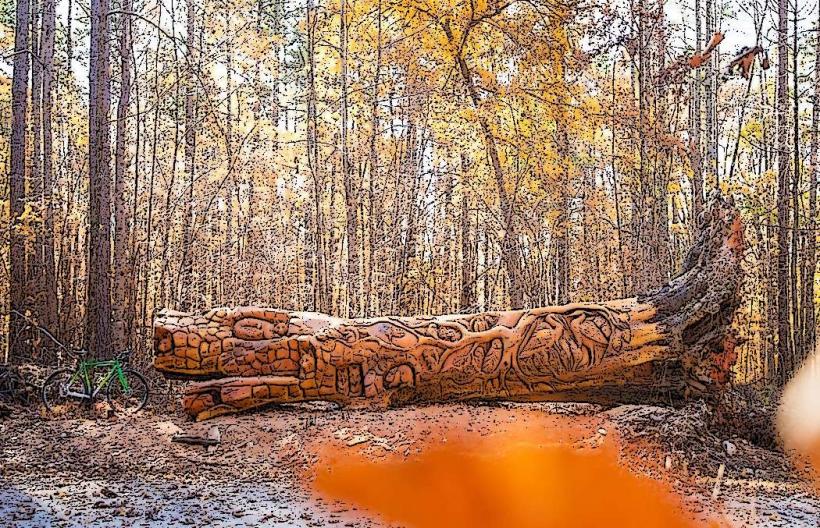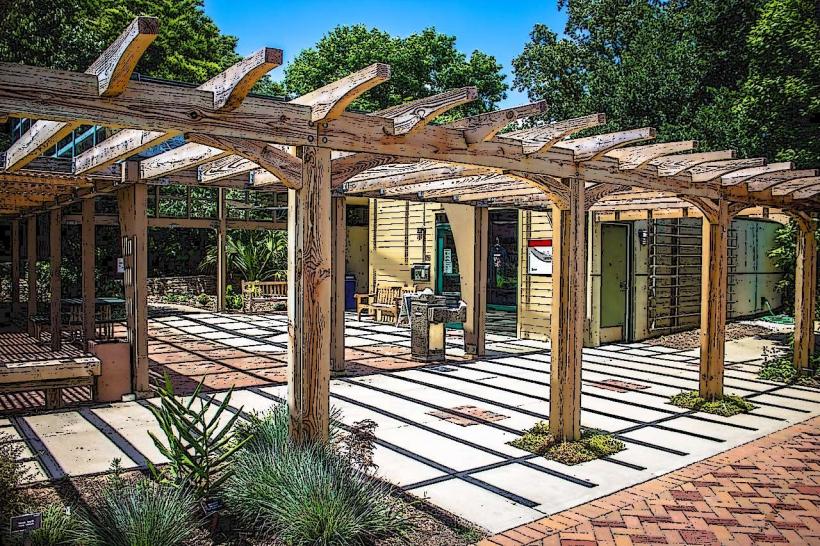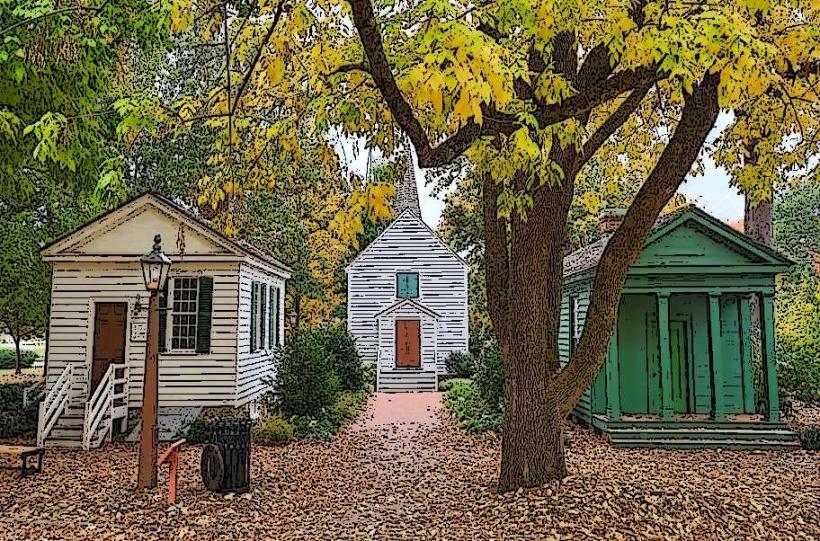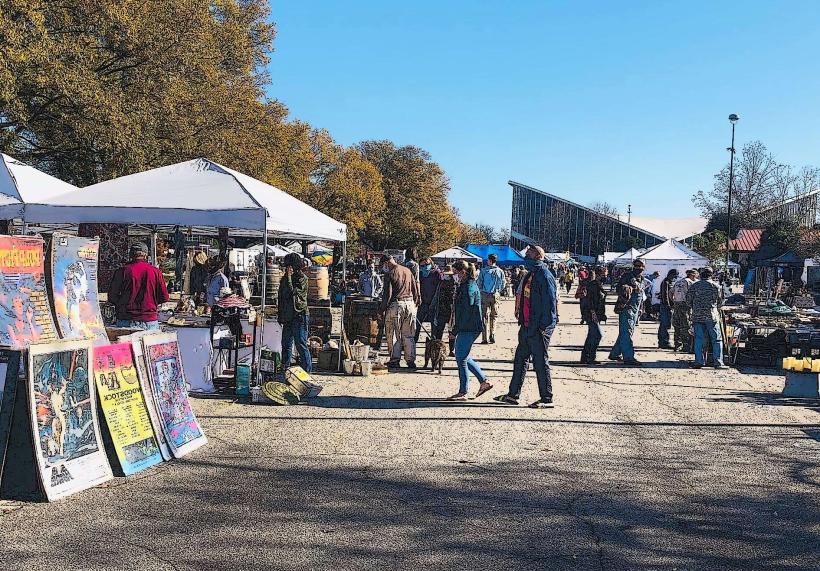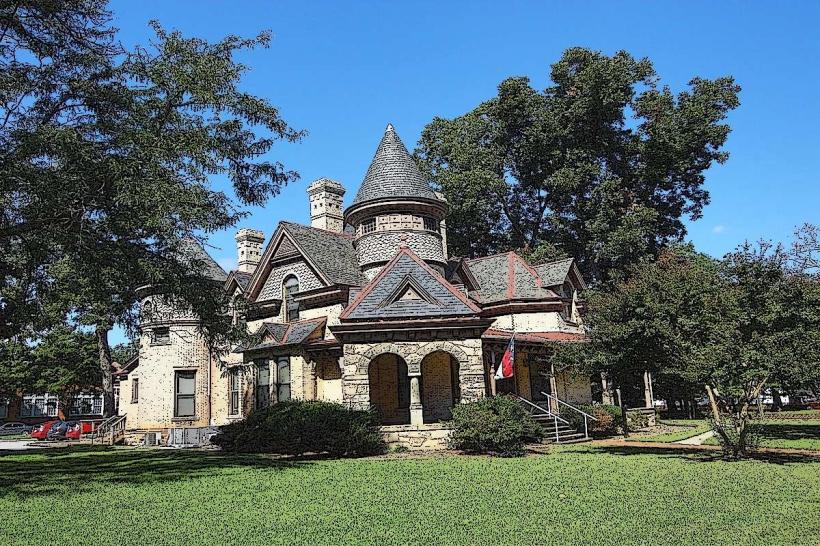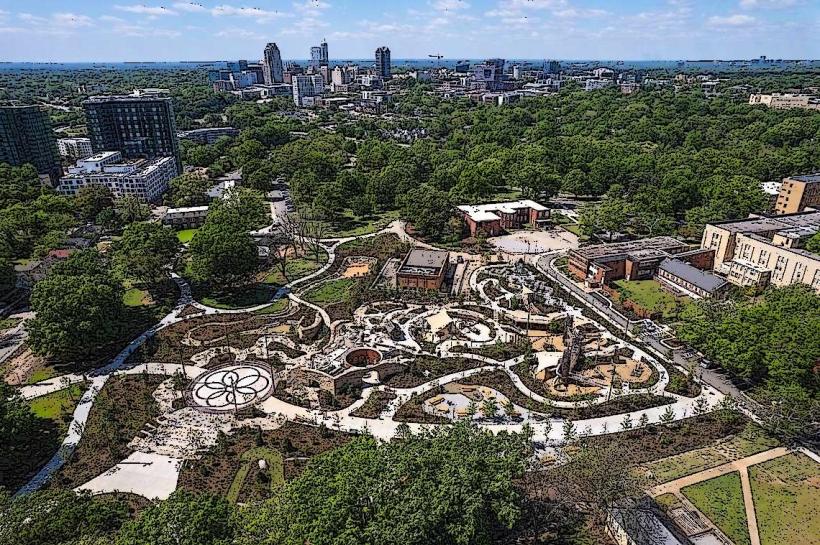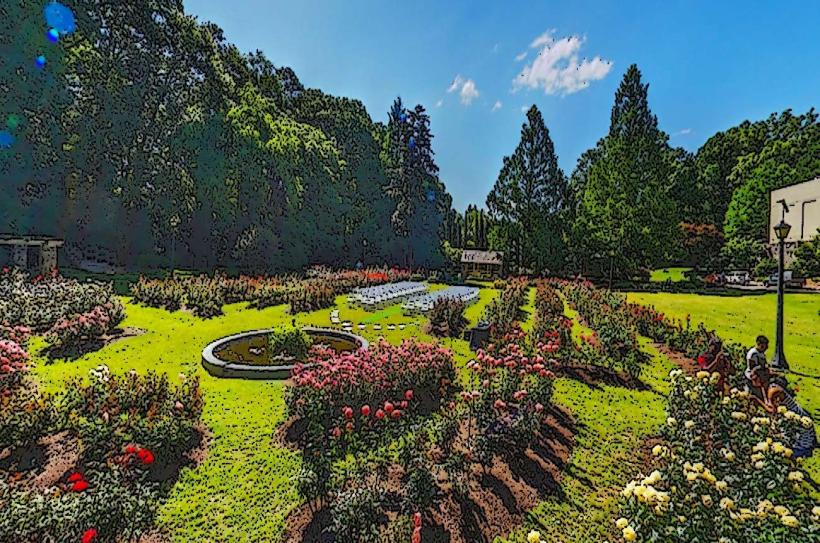Information
Landmark: North Carolina Museum of Natural SciencesCity: Raleigh
Country: USA North Carolina
Continent: North America
North Carolina Museum of Natural Sciences, Raleigh, USA North Carolina, North America
Overview
In the heart of downtown Raleigh, the North Carolina Museum of Natural Sciences stands as the Southeast’s largest natural history museum-and one of the state’s most popular spots, drawing crowds to its towering dinosaur skeletons, what’s more you’ll find yourself drawn in by its scientific exhibits, the rustle of live animals, cutting-edge research labs, and programs that invite the public to take part.The museum stretches across several linked buildings and campuses, each devoted to its own specialty-one hall buzzes with dinosaur fossils, another hums with marine life-together creating a rich, all-in-one journey through the natural sciences, equally important first.Somehow, The Nature Exploration Center is the museum’s original building, with four floors of permanent exhibits that bring North Carolina’s biodiversity, geology, and ecosystems to life-plus glimpses of wonders from far beyond its borders, likewise at the NEC, the Mountains to the Sea exhibit takes you on a vivid journey across North Carolina’s landscapes, from the misty peaks of the Appalachians to the quiet shimmer of coastal estuaries.The exhibit showcases vivid dioramas, where taxidermied foxes crouch in tall grass beside real specimens arranged in lifelike habitats, meanwhile step into prehistoric North Carolina, where the state’s deep past comes alive in real fossils, a towering Acrocanthosaurus skeleton that once roamed here, and lifelike recreations of creatures such as the massive ground sloth.In coastal North Carolina, you can glimpse whale and dolphin skeletons up close, watch live marine life glide through dazzling aquariums, and explore hands-on exhibits that bring tides, estuaries, and coastal habitats to life, what’s more terror of the South showcases the mighty Acrocanthosaurus in a striking display, flanked by fossilized footprints and other Cretaceous-era treasures.Living Conservatory: Step inside and wander through an indoor habitat that recreates the warm, earthy air of a Central and South American dry tropical forest, as well as step inside and you’ll find live butterflies drifting past your shoulder, a sleepy two-toed sloth, turtles basking in the light, and lush tropical plants filling the warm, greenhouse air.Underground North Carolina invites you to dig into the state’s geology, with hands-on displays, glittering mineral samples, and worn mining tools that reveal the hidden layers beneath our feet, as a result number two, more or less The Nature Research Center, linked to the NEC by a glass-walled bridge known as the “Bridge Across Time,” focuses on bold, forward-looking research and deep scientific exploration, subsequently it’s both a museum and a working science lab, where glass cases line the walls beside humming equipment.At the NRC, the SECU Daily Planet Theater stands as a three-story globe, its massive high‑definition screen lighting up with live science talks, film showings, and dynamic educational lectures, likewise it stands at the heart of the museum, drawing every eye like a glowing lantern in a dim room.Visible Research Labs: Through clear glass panels, visitors watch scientists at work-sequencing genes, dusting ancient fossils, mapping distant stars, and peering into cultures of tiny microbes, while these labs give the public a chance to meet researchers face-to-face, ask questions, and notice their work up close.Curiously, Investigate Labs offer a hands-on space where visitors-especially students-can run experiments and try out real scientific tools, from beakers to microscopes, to boot the school has labs for chemistry, biology, and the natural sciences, each stocked with microscopes and glass beakers, sort of To be honest, The Dueling Dinosaurs Exhibit showcases one of the greatest paleontological discoveries in recent memory-a Tyrannosaurus rex and a Triceratops locked together in stone, as if frozen mid-battle, after that the exhibit delves into how they were preserved, imagines possible combat scenes, and shares how scientists date and study the fossils-right down to the fine cracks in the bone, kind of At Micro World iLab, visitors peer through powerful microscopes and cutting-edge imaging tools to explore microbes, DNA strands, and tiny living cells shimmering under the lens, alternatively it dives into biological research and makes it easy for anyone to grasp, whether you're twelve or sipping coffee at seventy.Truthfully, Windows on Research features slight exhibits that spotlight current projects and discoveries from North Carolina and far beyond, refreshed often to showcase the latest findings-like a freshly inked chart pinned beside a glowing microscope, in turn number three.Special installations inspired by nature wind through the NRC lobby, blending art and science as sunlight glints off their curved forms, and it’s a 90-foot display built from programmable LCD tiles, flashing patterns from nature-fractals curling like ferns, waves rolling in sequence, and galaxies spiraling into the murky.Arthropod Zoo is a lively corner filled with insects, spiders, millipedes, and crustaceans, from glittering beetles to tiny crabs scuttling in their tanks, in turn live animals are on display, swapped out now and then for fresh specimens-a shining green tree frog might appear one week, gone the next.Kids love it, and bug lovers can’t resist stopping to peer at the beetles crawling under glass, besides the Snakes of North Carolina exhibit brings you face-to-face with both venomous and harmless species from the region, with clear, detailed panels explaining where they live and how they behave.Number four, at the same time public programs and school field trips welcome all ages, offering curriculum-based lessons that explore ecosystems, trace evolution, dig into geology, and highlight conservation-sometimes with the crunch of gravel underfoot on a nature trail.Science Cafés and Lectures offer lively evening talks for adults and teens, mixing science with culture and often bringing in guest speakers-like a marine biologist fresh from the field or a renowned researcher-to share their stories, to boot summer camps and workshops give kids ages 5 to 16 a chance to dive in and build, code, or even sift sand for fossils, with topics ranging from robotics to environmental science.It appears, Dino Dig Live and Virtual Expeditions let visitors watch real paleontological digs as they happen-whether through a livestream from the dusty pit or by exploring hands-on, interactive exhibits, on top of that five.Prairie Ridge Ecostation in Raleigh is a satellite and partner campus of the museum, offering trails where you can hike past tall prairie grasses, spot warblers in the trees, and wander through forest and wetland habitats, besides it holds outdoor classes under the open sky and welcomes locals to join hands-on science events, somewhat At the Whiteville Branch, you’ll find exhibits celebrating the natural heritage of southeastern North Carolina-think pine-scented trails and coastal marsh life-alongside community programs rooted in the local environment, in addition at the Greenville Branch, you’ll find a blend of natural wonders and cultural displays, all spotlighting the region’s biodiversity and the challenges of conserving it-like the delicate balance needed to protect its wildflower-covered meadows.Contentnea Creek in Hookerton, NC, spans 400 acres, with winding hiking paths, a sparkling astronomy observatory, a planetarium, and quiet canoe trails along the water, at the same time it offers room for hands-on environmental science programs and quiet, immersive retreats where you can hear the wind move through the trees.You’ll find Visitor Essentials at 11 West Jones Street in Raleigh, North Carolina, open every day from 10 a.m, moreover to 5 p.m.-and yes, admission’s free for everyone.You might have to pay for certain special exhibits or events-like that candlelit tour in the antique hall, what’s more the museum welcomes everyone-it’s fully wheelchair-accessible and offers thoughtful accommodations, from ramps at the entrance to seating in quiet corners, for visitors with disabilities.You’ll find elevators, ramps, and even assistive listening devices ready to use, from smooth lift doors to clear, amplified sound, subsequently grab a quick bite at the on-site café, where you can smell fresh coffee and find light snacks, then wander into the gift shop stocked with educational toys, books, and quirky science-themed treasures.At the North Carolina Museum of Natural Sciences, visitors can dive into a seamless blend of public education, hands-on research, and the wonder of natural history-like standing beneath the towering skeleton of a prehistoric whale, equally important maybe you’re drawn to the mystery of prehistoric creatures, curious about thriving ecosystems, or fascinated by research unfolding right now.
Author: Tourist Landmarks
Date: 2025-10-03

